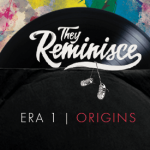How Boomboxes and Walkmans Changed Hip Hop
L
ast week, we learned about how records came to be and who created the mixer and why it was created. This week, I would like to explore the history of cassette tapes, the boom box and the Sony Walkman. These items are essential pieces to the history of Hip Hop and its dances. All of them provided portability and music could suddenly be taken anywhere (like the street corners) and shared with others. Being able to take music to the streets created the opportunity for bboys to get together and practice anywhere they wanted.
Oberlin Smith first created the theory of magnetic recording in 1878 but it wasn’t for another 20 years before any real progress was made. In 1898, Valemar Poulsen patented the telegraphone which was the first magnetic recording device. When the patent expired, Germany began moving forward with applying magnetic powder to film or paper strips and in 1930, AEG (German: ” General Electricity Company”) developed the magnetophone machine. This consisted of the magnetic tape being wound between two reels; reel-to-reel recording.
The Compact Cassette

Over the next 10 years, RCA Records made the first attempt to put this reel-to-reel tape in cartridge from. In doing this, you were able to play both sides and it was also reversible. This format didn’t last long because RCA didn’t have license to record music or the market for home machines.
Over the next few years, Philips, Grundig and Sony fought over the rights; name, manufacturing, and royalties. Finally, Philips gave in and free of charge made the technology available to manufacturers. It took a few years for a name for this new technology to settle and since 1965; this technology has been known as the “Compact Cassette.” Opening up this technology allowed improvements to move quickly and advances in noise reduction and ability to be played as stereo tapes kept the industry fresh and rapidly changing.
Philips created the first boombox in 1969 and it became popular due to its compact size. The box itself had to be big, it had large speakers and magnets to push all the air around. The speakers and magnets were in a heavy metal casing and the overall boombox could get extremely cumbersome.
The boombox was a huge part of the Hip Hop culture but in the 1980’s many cities enforced noise ordinances. Because of this, Sony created a personal listening device; the Walkman. The Walkman became the world’s first low-cost portable stereo. The first few months’ sales were extremely low but then Sony’s Walkman went on to be the most successful brand available.
As accessibility to cassette tapes became cheaper and more available, musicians were able to record themselves easier and without the need of a label. Grandmaster Flash would actually charge $1.00 per minute for custom “party tapes”. Doing this for richer fans, he would shout out the buyer’s name as a part of his lyrics. Flash would also give these mixtapes to taxi drivers would drive high-end clients around New York. This starting hurting record labels, and a few albums started to leave their B-side blank so the consumer could record whatever they liked.
The music industry has survived many challenges and decades of financial hardships. Nevertheless, it has persevered and creative sound continues to meet the demands of the public. Technology has made music easily accessible, less expensive, and because of the creation of cassette tapes, boom boxes, and Walkmans, more portable than any time in history. And this is the reason hip hop has become so popular worldwide. It’s exciting to think what will happen next. Learn more about the history of Hip Hop at They Reminisce, February 6th, and 7th, 2015.
Please see links below for more information regarding Music Technology.
http://vintagecassettes.com/_history/history.htm
http://www.npr.org/2009/04/22/103363836/a-eulogy-for-the-boombox
http://www.theverge.com/2014/7/1/5861062/sony-walkman-at-35
http://www.theguardian.com/music/2013/aug/30/cassette-store-day-music-tapes




